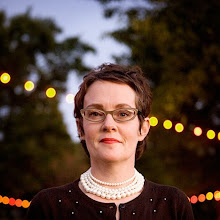


from the top:
Los Torreznos, "Identity," 2009, modified arts
Ralph Nader speaking at the Valley Forward Livability Summit, April 16, 2009
Janet Echelman "Her Secret is Patience," 2009, public unveiling, April 16, 2009
Happening in Phoenix the last few weeks: Spanish performance art duo
Los Torreznos performed a new work, "Identity," a quasi nonsensical work that explored our shifting definitions of self. I heard Ralph Nader speak about the need to up-date all governmental regulations, for example, in order to facilitate new green businesses--where Phoenix should be a leader but is not yet. And Thursday night was the public celebration of
Janet Echelman's floating dream in downtown Phoenix.
Pockets of the city are electric with activity--the dawn of a new era in this time of economic collapse? Are we becoming a place with a soul, a heart?
Former Phoenix Mayor / current Attorney General Terry Goddard once told me that civic leaders weren't sure that Phoenix needed a downtown (this you gotta love about Phoenix--when would a curator get to have a coffee with the attorney general?)--but over the past five years, the downtown (and, perhaps, the rest of the city) has been transformed, thanks largely to ASU's President Michael Crow, former governor Janet Napolitano and current Mayor Phil Gordon. Janet Echelman's public art "Her Secret is Patience" is the crowning glory of our new downtown civic space. In honor of the glorious desert in which we live, and referencing the changeable sky above, Echelman's work will change every day to match the shifting patterns of nature herself (lighting by Paul Deeb). But the work also focuses the energies of the various buildings around it--the ASU Cronkite School of Journalism, a bus depot, light rail and the Westward Ho, an historic hotel (part of the Ho chain of Southern Arizona), currently HUD housing for the disabled--in an unimagined way.
Through the efforts of Crow et all, Phoenix now has the appearance of a big city, filled with tall buildings. With the Echelman, we now have a heart.
Let's see if our city leaders can truly make the right decisions during this economic crisis, to support the kinds of things that will lead us out of this morass: real funds for education, diversification of our economy, encouragement of grass roots entrepreneurship and to allow for the types of things--like this significant public work of art--that will make us a great city.
Art can be the iconic emblem of a city's ambition; only its leaders can make the city viable.














